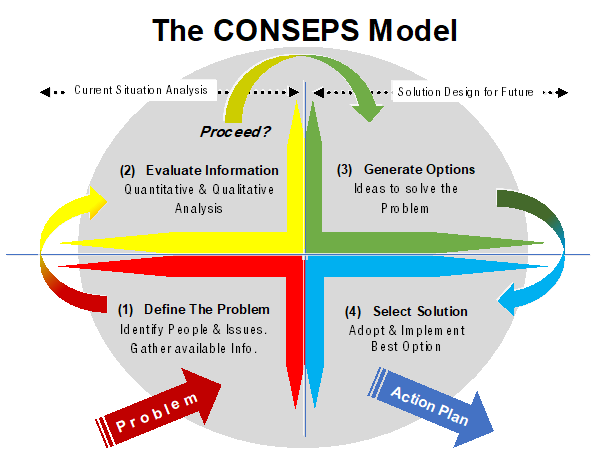Observations
Many family business groups, from small to large, young and old, don’t have an agreed, coherent process for problem-solving or decision-making. Given that family and business life is a constant progression of issues, challenges, and problems that need to be resolved by wise decisions, it’s inevitable that the absence of good processes is a common cause of conflict in family business.
Up to a point, the leaders of any privately owned business can make decisions autocratically, without much concern for scrutiny or opposition. But eventually, those points add up to become a tipping point, where autocracy (actions based on superior power) no longer works as intended. Then, family members and employees start resenting, and actively opposing, some or all decisions made that ignore, or reject, their inputs.
This opposition is taken as a personal challenge by leaders who aren’t accustomed to their decisions being questioned, or to sharing much (or any) of the responsibility for decision-making.
Some leaders re-set and adapt constructively to the changed regime. Indeed, for them this is just what they’ve been waiting for: hard evidence that there is steel in the backbone of the next generation – at last they look to be worthy of serious consideration for succession.
But the newly enlightened few are outnumbered by those who respond with anything from dogged inflexibility, to extreme negativity. And that causes conflict – in the family and in the business – and it often delays, or completely derails, succession processes.
Stephen Covey says there are two components to every action: (1) conception; (2) the action itself. So, after we consciously conceive that making good decisions produces better outcomes than making bad ones, we should also make our decision-making processes as good as they need to be. This applies just as much to a business family as it does to a family business.
It’s not much of a stretch: review some past decisions; evaluate their outcomes, and assess the process (if any) that went into making said decisions. Of course, if we’re not that good at making decisions, we may not do this exercise terribly well!
The irony in all of this is that family businesses that need help as a result of poor past decisions now need to make a bunch of good decisions to address their challenges and help to get them to a better place. Because poor decisions are the direct result of poor processes, the first thing they need to do is improve their process – that being the only way to consistently make better decisions in the future.
Almost invariably, a culture that supports poor decision-making processes in a family will be reflected by poor decision-making in an associated family business. The good news is that once there’s a commitment to improve the process in one entity, it usually infects the other with the same resolve.
Solution
Adopting a better decision-making process requires a process, in itself. And it’s really worth doing: improving the nature and quality of decision-making can have a more profound effect on the future lives of individuals, the family and the business, than just about anything else you can do. And it really doesn’t take that much to do it:
- Family and/or business leadership teams: (a) acknowledge the need and, (b) commit to implementing improved problem-solving and decision-making processes.
- The family or business group undertakes training to develop an agreed XXX Family / Family Business Decision-Making process. (Note: I developed the CONSEPS (Conscious Separate Stages) Decision-Making Model as a direct response to the observed needs of business families. I’ve subsequently seen similar processes used in many other organisations, including the military).

- Develop and agree the wording for a XXX Family / Family Business, Decision-Making Process.
- Create a process checklist for use in all future decision-making activities.
- Include a copy of the checklist with all meeting agendas, along with a set of standard Meeting Process Rules (covering how meetings should be run, including preparation, administration, and recording of outcomes).
- The meeting Chair, or Facilitator, confirms the application of Meeting and Decision-Making Rules at the commencement of all significant meetings.
- Meeting Chairs, or Facilitators, are empowered and required to enforce strict adherence to agreed process rules. It’s common for a family member to also take it on themselves to enforce the rules.
- Per the Meeting Rules: document all decisions made in accordance with due process in Minutes, or Notes, of Meetings. If it ain’t noted, it don’t exist. If it’s noted, it’s real.
- Decisions properly made are a collective responsibility that must be supported by all meeting participants, whether or not they agreed with the decision. If a member of the decision-making group acts against a properly made decision, they risk being expelled from the group. This is critical to maintain discipline.
- Decisions made can only be changed by a process of at least equal authority to the initial decision.


